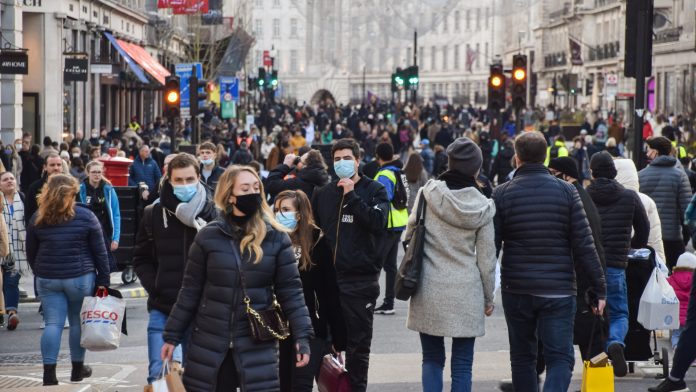
A study conducted by Imperial College London has revealed that the life expectancy in England had been falling in many regions of the country prior to the COVID-19 pandemic.
The investigation, funded by the Wellcome Trust, Imperial College London, the Medical Research Council, Health Data Research UK, and the National Institute of Health Research, illuminated that a significant number of English communities demonstrated a decline in life expectancy between 2010 and 2019. The team’s expert analysis showed that in the five years before the pandemic – between 2014 and 2019 – life expectancy declined in almost 20% of communities for women and in 12% of communities for men.
The findings of the study are published in The Lancet Public Health journal.
Life expectancy trends
The novel study is the first of its kind to examine longevity trends in comprehensive detail, accurately determining reductions in life expectancy in England with more precision than ever before. The team analysed life expectancy in communities of around 8,000 residents – a significantly more intense approach than other studies , where data is typically based on larger areas with a median population of 140,000 people, such as local authority districts. The researchers ascertained that urban areas in the North of England had the communities with the lowest life expectancy – below 70 years for men and 75 years for women.
Professor Majid Ezzati, the senior author of the research from the School of Public Health at Imperial College London, said: “There has always been an impression in the UK that everyone’s health is improving, even if not at the same pace. These data show that longevity has been getting worse for years in large parts of England.”
“Declines in life expectancy used to be rare in wealthy countries like the UK and happened when there were major adversities like wars and pandemics. For such declines to be seen in ‘normal times’ before the pandemic is alarming and signals ongoing policy failures to tackle poverty and provide adequate social support and health care.”
The inequality of longevity
For their study, over 8.6 million death records from between 2002 and 2019 in England were analysed and assigned to the community where each person lived at the time of their death, with approximately 6,791 local communities included in the study. The results signified that the majority of communities displayed an increase in life expectancy between 2002 and 2010.
However, between 2010 and 2014, life expectancy began to decline for women in 20 communities and in one community for men, which rapidly accelerated over the next five years, resulting in a decline in almost 20% of communities for women and 12% for men. Furthermore, in these locations, the life expectancy of women was reduced on average by 0.17 years and 0.12 years for men.
The most considerable decline identified in women between 2002 and 2019 was in an area of Leeds, where a three-year reduction in life expectancy was found. The most significant decrease in men was of 0.4 years in an area of Blackpool. The researchers have highlighted that the places where these life expectancy declines occurred characteristically have a lower life expectancy and high levels of poverty, unemployment, and low education. In contrast, in some areas of Central and North London where poverty and unemployment are much lower, there were life expectancy increases by up to nine years or more for men and women between 2002 and 2019.
The research indicates that geographical location has a considerable impact on life expectancy. For example, in 2019, the difference between the highest life expectancy for women (Camden) and the lowest (Leeds) was around 20 years. The areas had an average life expectancy of 95.4 and 74.7 years, respectively. This gap was even more distinct in men, where the difference was 27 years, with an area of Kensington being 95.3 years and a part of Blackpool only 68.3 years.
The North of England comprised the majority of the communities with the lowest life expectancy, including Leeds, Newcastle, Manchester, Liverpool, and Blackpool, whereas the highest life expectancy was often found in London and the surrounding home counties.
Theo Rashid, the lead author from the School of Public Health at Imperial College London, said: “These results mirror an earlier trend in the USA – which also saw life expectancy declines prior to the pandemic. In both England and the USA, life expectancy declines are associated with unemployment and insecure employment following deindustrialisation, compounded by reductions in social and welfare support and reduced funding for local governments.
“These factors had larger effects in the North of England than in London and Southern parts of the country. These changes impact life expectancy because they are associated with poorer nutrition and housing, riskier behaviours, and more restricted health care services, all of which lead to worse health and premature deaths.”
Reducing the gap
The team has stated that action needs to be taken immediately to mitigate the deterioration and improve the health of disadvantaged communities. They urge the government to increase its investments in public health and healthcare in communities with the poorest health outcomes and introduce pro-equity economic and social policies.
Professor Ezzati said: “The post-COVID ‘Build Back Better’ agenda can create an opportunity for better health, but it currently does not focus on equity, and the resources allocated to ‘levelling up’ agenda are too little to address these concerning trends. To level up health, the government must make significant investments in people, communities, and health services to first reverse this deterioration of health in so many communities.”
























